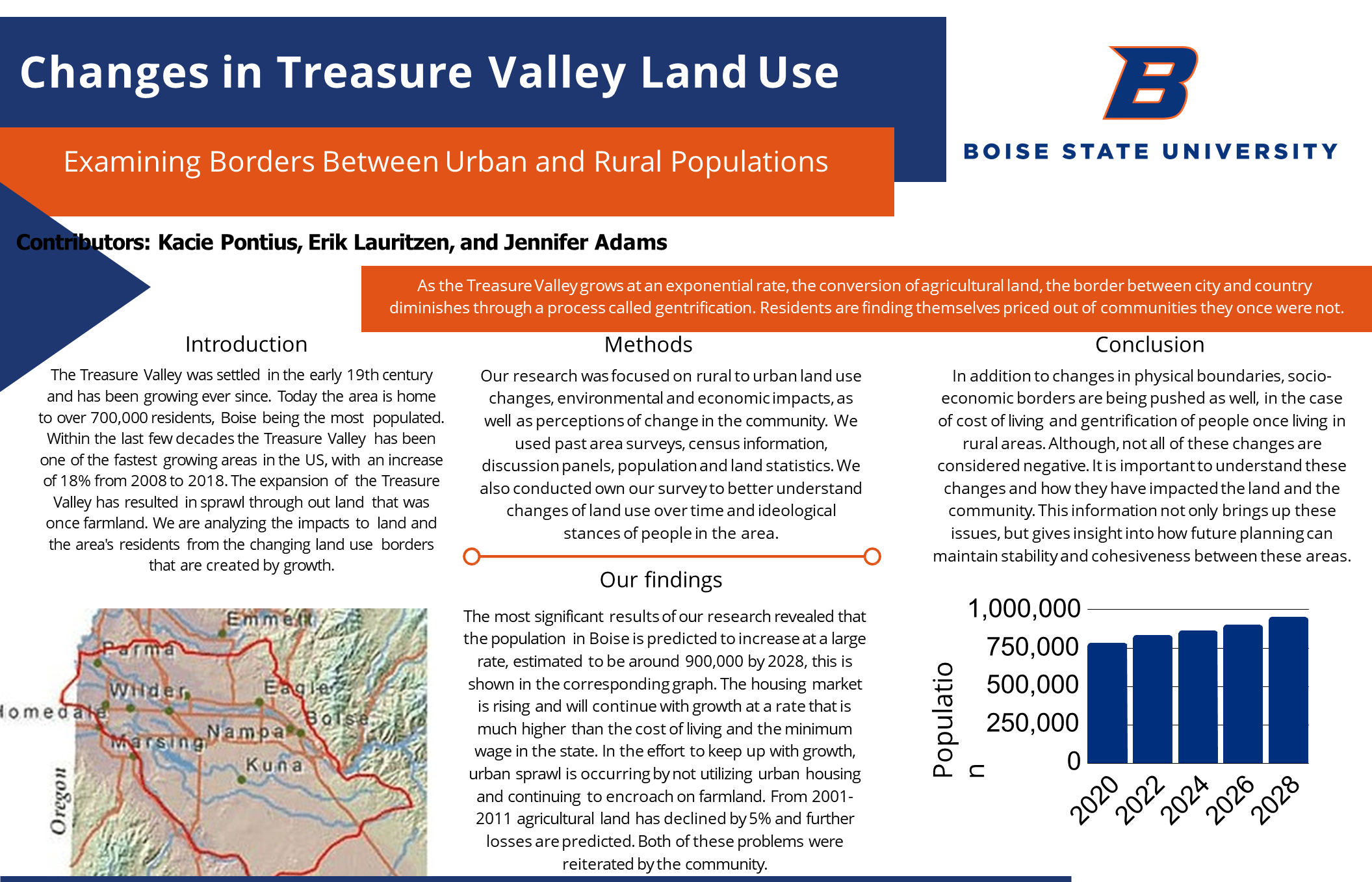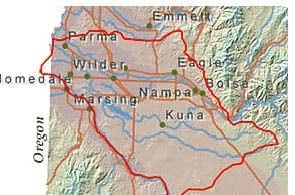Examining Borders Between Urban and Rural Populations
Kacie Pontius, Dr. Lisa Meierotto, Jennifer Adams, Erik Lauritzen

As the Treasure Valley grows at an exponential rate, the conversion of agricultural land, the border between city and country diminishes through a process called gentrification. Residents are finding themselves priced out of communities they once were not.
Introduction

The Treasure Valley was settled in the early 19th century and has been growing ever since. Today the area is home to over 700,000 residents, Boise being the most populated. Within the last few decades the Treasure Valley has been one of the fastest growing areas in the US, with an increase of 18% from 2008 to 2018. The expansion of the Treasure Valley has resulted in sprawl through out land that was once farmland. We are analyzing the impacts to land and the area’s residents from the changing land use borders that are created by growth.
Methods
Our research was focused on rural to urban land use changes, environmental and economic impacts, as well as perceptions of change in the community. We used past area surveys, census information, discussion panels, population and land statistics. We also conducted own our survey to better understand changes of land use over time and ideological stances of people in the area.
Our Findings

The most significant results of our research revealed that the population in Boise is predicted to increase at a large rate, estimated to be around 900,000 by 2028, this is shown in the corresponding graph. The housing market is rising and will continue with growth at a rate that is much higher than the cost of living and the minimum wage in the state. In the effort to keep up with growth, urban sprawl is occurring by not utilizing urban housing and continuing to encroach on farmland. From 2001- 2011 agricultural land has declined by 5% and further losses are predicted. Both of these problems were reiterated by the community.
Conclusion
In addition to changes in physical boundaries, socio-economic borders are being pushed as well, in the case of cost of living and gentrification of people once living in rural areas. Although, not all of these changes are considered negative. It is important to understand these changes and how they have impacted the land and the community. This information not only brings up these issues, but gives insight into how future planning can maintain stability and cohesiveness between these areas.